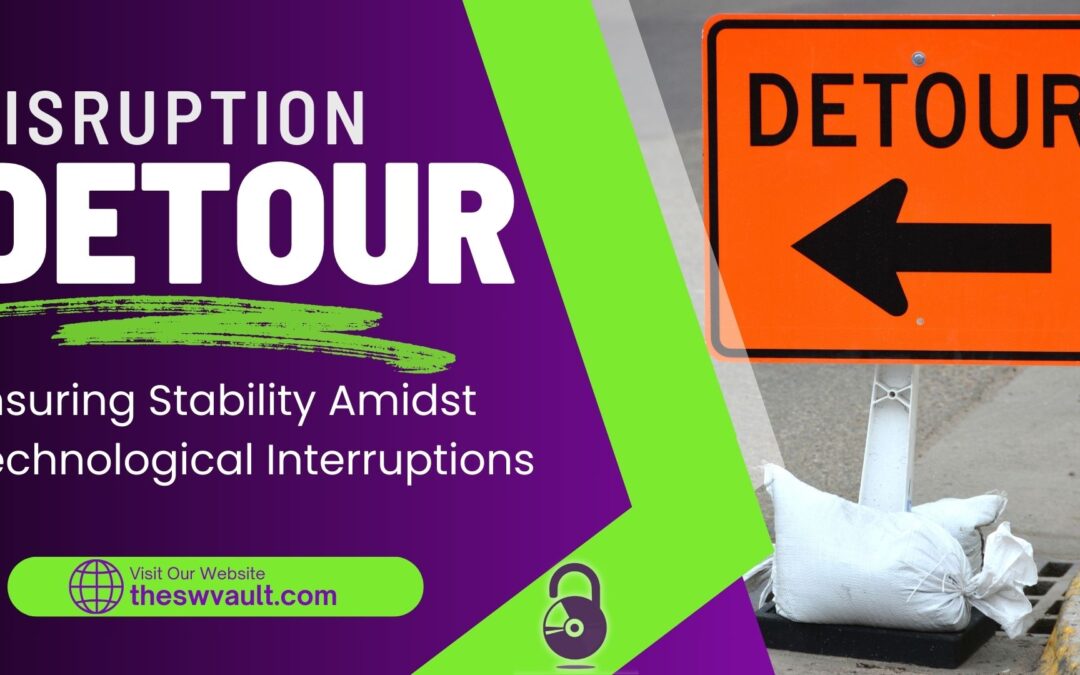Ensuring Stability Amidst Technological Interruptions
In today’s digitally driven landscape, automation plays a pivotal role in enhancing efficiency, streamlining operations, and driving innovation for businesses. However, as we have recently experienced with the recent outage resulting from a CrowdStrike update, with great reliance on technology comes the inherent risk of disruptions and failures that could greatly impact your operations. If your organization is heavily dependent upon automation or your organization is looking into automation, proactively addressing these risks is paramount to ensuring continuity and resilience. Let’s explore 5 strategies and best practices that your organization can adopt to mitigate risks when technology falters.
1. Identify Potential Areas of Technology Failures & Their Risks
In an automation-reliant environment, technology failures can manifest in various forms, from system outages, software updates, software glitches to cybersecurity breaches, data loss, etc. These disruptions not only hamper productivity but also pose financial, reputational, and regulatory risks to your organization. You should list all of the areas of a potential failure, analyze the impact and risks of the failure, and develop a strategy on how to mitigate an outage. Focus on the high impact, high risk failure points first as you work through a mitigation strategy.
2. Build and Test Redundancy & Contingency Plans
As your organization develops a mitigation strategy, one effective way to lower risks is by creating redundancy and contingency plans. This entails implementing and testing backup systems, alternate processes (even if manual), and fail–safe mechanisms to ensure business continuity in the event of a technology outage. By having redundant systems in place, your organization will be able to swiftly transition to backup solutions and minimize downtime.
I want to emphasize testing the redundancy and contingency plans on a regular basis. It does not benefit your organization to test the plans in real-time when everyone’s adrenaline is at an all-time high!
I saw this in action as I contemplated going to pick up my favorite tea at Starbucks as I was driving by. There was not the usual line, so I figured they must be impacted by the outage too (probably what others were thinking as they passed by all of the businesses). However, I decided to give it a go. Once I pulled up, the order attendant mentioned that they are moving slightly slower than usual due to the outage; but they are up and running! As I pulled around, I saw their contingency plan (alternate technology) in action resulting in business continuity.
3. Invest in Monitoring and Maintenance
In addition to routinely testing the redundancy and contingency plans, your organization should proactively monitor and perform regular maintenance of automated systems, another key component that feeds into your risk mitigation strategy.
By continuously monitoring technology performance, detecting early warning signs of potential failures, and conducting routine maintenance checks, your organization has the opportunity to preemptively address issues before they escalate into major disruptions potentially saving your organization time and money.
4. Regularly Train Employees
Continuously investing in the training of your employees will empower them with the necessary skills and knowledge to respond effectively to technology failures. Providing comprehensive training on contingency procedures, troubleshooting protocols, and emergency response plans will equip your staff to act swiftly and decisively during disruptions. Also, cross-training your employees to handle multiple roles can also improve your organization’s resilience in times of crisis. In addition, routinely walking through the contingency procedures on a regular basis (i.e. once per quarter) will help autopilot kick versus the initial time lost from the “sky is falling” mindset before the brain recalls the training from a year’s past.
5. Embrace a Culture of Adaptability
As your company adopts technology and automation, your organization should foster a culture of adaptability and agility. These two characteristics are essential for navigating technology failures. Your organization should also encourage innovation, flexibility, and quick decision-making so that the organization can pivot rapidly in response to disruptions. Lastly, fostering a culture of continuous improvement and learning will allow your organization to stay ahead of potential risks and proactively address challenges as they arise.
Conclusion
While automation brings numerous benefits to modern businesses, it is crucial for companies heavily reliant on technology to be prepared for inevitable failures. By understanding the risks, implementing redundancy measures, investing in monitoring and maintenance, providing employee training, and cultivating a culture of adaptability, your organization will be able to effectively mitigate risks and ensure operational resilience in the face of technological disruptions. By embracing proactive risk management strategies, your organization can navigate challenges with confidence and emerge stronger from adversity.
Reach out to our Software Vault Team to discuss how to amplify your data collection processes in order to transparently and confidently express your organization’s impact. We’re here to support organizations like yours in effectively adapting technology that can help amplify your impact.
Disclaimer: This blog post is intended for informational purposes only and does not constitute professional advice. Organizations should evaluate their specific needs and consult with technology experts before making any decisions.

